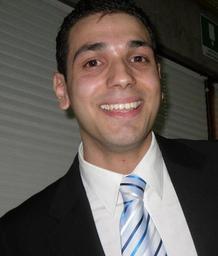| Mario Valerio Giuffrida, University of Edinburgh |
| Fri 23 Sep 2016, 13:00 - 14:00 |
| AGB Seminar Room, AGB Building, King’s Buildings, EH9 3JL |
If you have a question about this talk, please contact: Iman Tavakkolnia (s1371647)

Abstract: Finding suitable features has been an essential problem in computer vision. We focus on Restricted Boltzmann Machines (RBMs), which, despite their versatility, cannot accommodate transformations that may occur in the scene. As a result, several approaches have been proposed that consider a set of transformations, which are used to either augment the training set or transform the actual learned filters. In this paper, we propose the Explicit Rotation-Invariant Restricted Boltzmann Machine, which exploits prior information coming from the dominant orientation of images. Our model extends the standard RBM, by adding a suitable number of weight matrices, associated with each dominant gradient. We show that our approach is able to learn rotation-invariant features, comparing it with the classic formulation of RBM on the MNIST benchmark dataset. Overall, requiring less hidden units, our method learns compact features, which are robust to rotations.
Biography: Valerio is currently pursuing his PhD funded by the Italian government and the Alan Turing Institute jointly at IMT Lucca (Italy), and the University of Edinburgh, under the supervision of Dr. Sotirios A. Tsaftaris. He is working on neural networks and invariance feature learning applied to image analysis. During his PhD he has published several conference papers, embracing machine learning and biology, and using inspiring application domains (Plant Phenotyping) to derive new methods of computer vision rooted in learned (and invariant) feature representations. He also contributes as a software developer for Phenotiki (http://phenotiki.com). As part of his career, he will soon join The Alan Turing Institute, where he will continue his work on neural networks at their headquarters in London. He received his M.Sc. with the highest honours at the University of Catania (Italy), where he was also engaged in several projects with industrial partners (e.g. ST Microelectronics).


